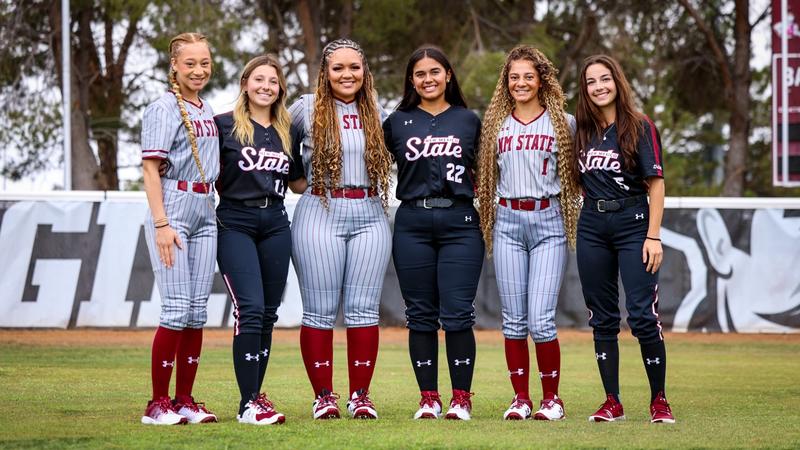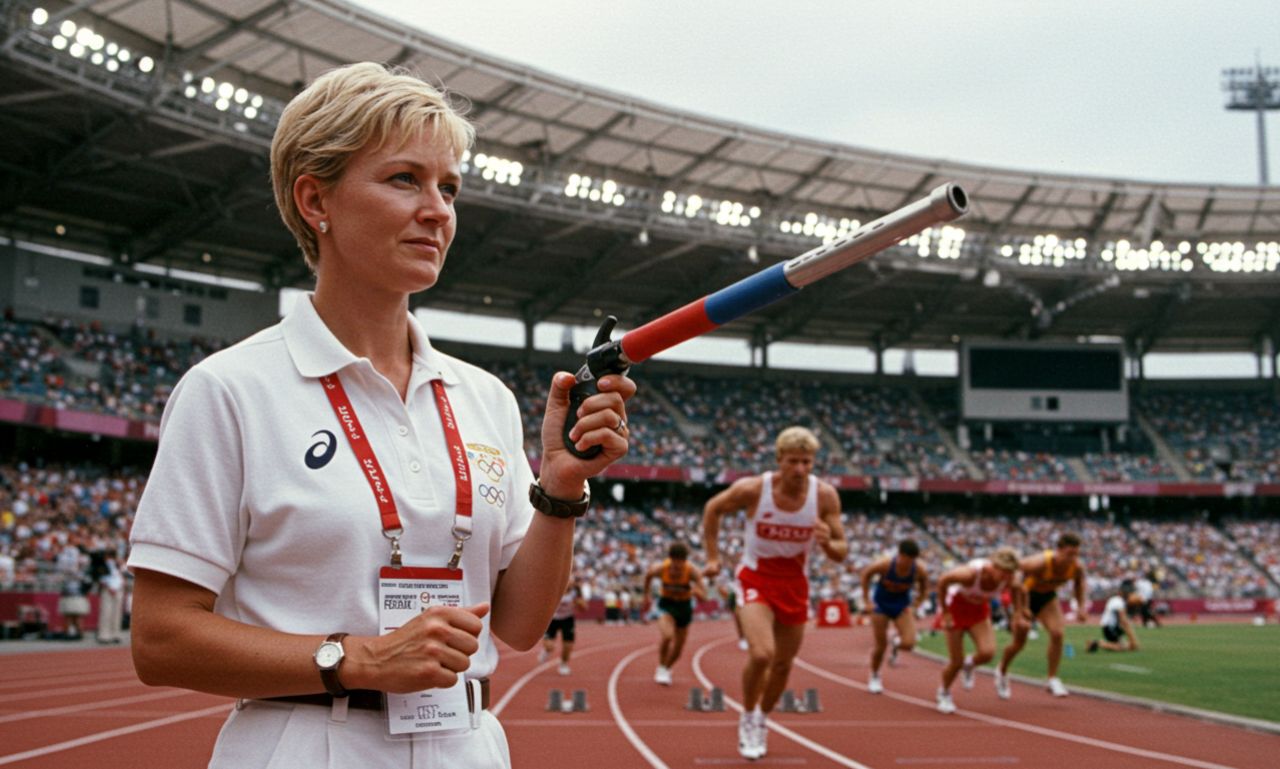Navigating the Softball Transfer Portal 2025: A Complete Guide
The world of college softball is more dynamic than ever, and a big reason for that is the NCAA Transfer Portal. If you’re a player, parent, or coach, understanding the ins and outs of the softball transfer portal 2025 is essential. This system has completely changed how athletes find new opportunities and how coaches build their rosters. It can seem complicated, but this guide is here to break it all down for you. We’ll cover everything from key dates and eligibility rules to making yourself stand out to your dream program.
The transfer portal is essentially a database that allows student-athletes to declare their intention to transfer from their current school. Once a player’s name is in the portal, coaches from other institutions can contact them. This process creates a more transparent and accessible path for athletes seeking a new team, whether for more playing time, a better academic fit, or a different team culture. For the upcoming year, staying informed about the softball transfer portal 2025 will be crucial for navigating your collegiate athletic journey successfully.
Key Takeaways
- Understand the Windows: The NCAA has specific timeframes, or “windows,” when softball players can enter the transfer portal. Missing these windows can make you ineligible for the following season.
- Eligibility is Key: Not every player who enters the portal is immediately eligible to play. You must meet NCAA academic and transfer requirements.
- NIL is a Factor: Name, Image, and Likeness (NIL) opportunities can influence transfer decisions, but they should be considered carefully alongside academics and athletics.
- Preparation is Everything: Your performance, academics, and how you market yourself are all critical. Coaches in the softball transfer portal 2025 are looking for the complete package.
- Communication is Crucial: Once in the portal, how you communicate with interested coaches can make or break your chances of finding the right new home.
What Exactly is the NCAA Transfer Portal?
Think of the NCAA Transfer portal as a digital marketplace for student-athletes. It’s an official compliance tool created by the NCAA to manage the transfer process. Before the portal existed, a player who wanted to transfer had to ask their current coach for permission to contact other schools. This could lead to awkward conversations and coaches blocking transfers to rival programs. The portal removes that barrier. When a student-athlete asks their school’s compliance office to enter their name into the portal, the school is required to do so within two business days.
Once an athlete’s name, sport, and contact information are in the database, it becomes visible to coaches across the country. This signals that the player is open to being recruited. It’s important to understand that entering the portal does not mean you have to transfer. An athlete can withdraw their name at any time and potentially remain at their current school, though the coach may have already given their scholarship to another player. The system is designed to empower athletes, giving them more control over their collegiate careers. For those looking ahead, understanding this foundation is the first step to mastering the softball transfer portal 2025.
How the Portal Works in 2025: Key Mechanics
The process for using the softball transfer portal 2025 is straightforward but requires careful attention to detail. It all starts with the student-athlete’s decision to explore other options. The first step is to have a formal conversation with your current school’s compliance office. You will officially request to be entered into the NCAA Transfer Portal. Your school cannot deny this request. Within 48 hours, your profile will be active. This profile includes your basic information, sport, eligibility details, and academic history.
From there, the ball is in your court. Coaches are not allowed to contact you until your name officially appears in the portal. Once it does, they can reach out via email, phone, or text. It’s up to you and your family to manage these communications, vet programs, and decide which schools are a good fit. This is also the time to gather game film, stats, and academic transcripts to send to interested coaches. Think of yourself as a free agent. You are marketing your skills to potential new teams. It is a proactive process, and simply entering your name is not enough to guarantee offers will pour in.
Important Timelines: The 2025 Transfer Windows
One of the most critical aspects of the softball transfer portal 2025 is understanding the “transfer windows.” The NCAA has established specific periods during which student-athletes can enter the portal and be eligible to compete in the following academic year. For softball, this window typically opens after the season concludes. The 2024-25 academic year has a 45-day window for fall and winter sports, but spring sports like softball have a slightly different timeline.
For Division I softball, the window opens shortly after the championship selections are announced in May and runs for 45 days. It’s crucial to confirm the exact dates on the NCAA’s official site, as they can shift slightly each year. If you enter the portal outside of this designated window, you may not be eligible to play during the 2025-2026 season without a waiver. This rule was put in place to bring some order to the transfer chaos and prevent players from leaving their teams mid-season. Planning your decision around this 45-day window is absolutely essential for a smooth transition.
Undergraduate vs. Graduate Transfers
The rules can differ based on your academic status.
H3: Undergraduate Eligibility Rules
For undergraduate students, the rules are stricter. If this is your first time transferring, you are generally allowed a one-time transfer exception, meaning you can be immediately eligible at your new school, provided you meet academic requirements and entered the portal during the official window. However, if you are transferring for a second time as an undergraduate, you will likely have to sit out a year of competition unless you qualify for a specific NCAA waiver.
H3: The Graduate Transfer Advantage
Graduate transfers have more flexibility. If you have completed your undergraduate degree and still have athletic eligibility remaining, you can transfer to a new school to pursue a graduate program and play immediately. You are not subject to the same transfer window restrictions as undergraduates, and you can transfer multiple times as a graduate student without having to sit out, as long as you are accepted into a graduate program. This makes experienced graduate players highly sought-after commodities in the softball transfer portal 2025.
Navigating Scholarships and Roster Spots
Entering the transfer portal comes with a significant financial consideration: your athletic scholarship is not guaranteed. When you inform your school of your intent to transfer, the institution has the right to cancel your athletic aid at the end of the academic term. This means if you don’t find a new school, you could be left without a scholarship at your original one. Furthermore, while your new school may offer you a roster spot, the scholarship amount can vary. It might be a full scholarship, a partial one, or even a walk-on position.
Coaches must manage their limited number of scholarships (12 for a fully funded NCAA Division I softball program) and a finite number of roster spots. When they recruit from the softball transfer portal 2025, they are often looking to fill a specific, immediate need—like a power-hitting corner infielder or a dominant pitcher. They are weighing the experience of a transfer against the long-term potential of a high school recruit. It’s a complex puzzle, and understanding that you are competing for a limited resource is key to setting realistic expectations.
The Role of NIL in Transfer Decisions
Name, Image, and Likeness (NIL) has added another layer to the transfer equation. NIL allows student-athletes to earn money from endorsements, sponsorships, social media, and other ventures. For some athletes, the potential for better NIL opportunities at a school with a larger brand or in a more active market can be a major factor in their decision to transfer. Collectives—groups of alumni and boosters that pool funds to create NIL deals for a school’s athletes—have become major players in recruiting and retention.
However, it’s vital to approach NIL with a balanced perspective. While it can be a great benefit, it shouldn’t be the only reason for a transfer. A program’s culture, coaching staff, academic quality, and potential for playing time are still the most important factors for long-term success and happiness. Chasing a big NIL deal at a school where you won’t thrive on or off the field can be a short-sighted mistake. Use NIL as a potential tie-breaker, not the sole decision-maker, when evaluating your options in the softball transfer portal 2025.
Academic Credits and Transfer Eligibility
One of the most overlooked parts of the transfer process is academics. Just because you are athletically eligible doesn’t mean you are academically cleared. When you transfer, your new school’s admissions office will evaluate your transcript to see how many of your credits will transfer. Different schools and even different degree programs within the same school can have vastly different policies on accepting credits. You may find that you’ve lost a semester or even a full year’s worth of credits in the transition.
To remain eligible to compete, you must meet the NCAA’s academic progress requirements. This generally involves passing a certain number of credit hours each semester and maintaining a minimum GPA. Before you commit to a new school, you must work with their academic advisors to get a clear picture of which credits will transfer and what your academic path forward will look like. This is not a step to be rushed. A poor academic transition can jeopardize your eligibility and delay your graduation. For more insights on balancing student life, you can explore resources like those found at https://versaillesblog.com/.
Portal Nuances: D1, D2, D3, and JUCO
The transfer portal experience isn’t the same across all divisions. While the portal itself is a unified system, the rules, scholarship opportunities, and recruiting intensity vary significantly.
H3: Division I and Division II
In Division I and Division II, the process is highly competitive. These are the divisions where athletic scholarships are offered, making the stakes higher. Coaches in these divisions use the softball transfer portal 2025 extensively to find experienced players who can make an immediate impact. The recruiting timeline is fast, and the pressure is high. For players, this means you need to be prepared to make decisions quickly once offers start coming in.
H3: Division III and JUCO
In Division III, athletics are a passion, not a profession. D3 schools do not offer athletic scholarships, though they can provide academic aid and grants. Coaches still use the portal to find talent, but the focus is more on the overall fit with the school’s academic and community culture. Junior College (JUCO) is another popular route. Many players transfer from a four-year school to a JUCO for a year to improve their skills or grades before attempting to transfer back to a four-year program. The portal is a key tool for JUCO coaches looking to find talented players leaving D1 or D2 programs.
How to Stand Out in the Softball Transfer Portal 2025
With thousands of athletes entering the portal across all sports, you need a strategy to stand out. Simply being a good player isn’t enough.
Step 1: Polish Your Digital Presence
Your social media profile is your new resume. Make sure it’s clean, professional, and showcases your personality and love for the game. Post recent, high-quality highlight videos. Coaches are always watching.
Step 2: Create a Compelling Highlight Reel
Your video is your sales pitch. It should be 2-4 minutes long and start with your best plays. Include a variety of skills: hitting for power, slapping, fielding, throwing, and base running. Pitchers should show all their pitches and their velocity. Add a title card with your name, contact information, position, and key stats.
Step 3: Be Proactive in Your Outreach
Don’t wait for coaches to find you. Once you’re in the portal, compile a list of 20-30 schools that are a good academic and athletic fit. Send a personalized email to the head coach and recruiting coordinator at each school. Introduce yourself, explain why you’re interested in their program, and include a link to your highlight video and academic transcripts. Follow up is key.
Step 4: Lean on Your Support System
This process can be overwhelming. Rely on your parents, current or former coaches you trust, and mentors for advice. They can help you evaluate offers, practice for phone calls with coaches, and keep a level head.
A Transfer Checklist: Before and After Entering the Portal
Navigating the transfer process requires careful planning. This table outlines key actions to take before and after you officially enter the softball transfer portal 2025.
|
Before Entering the Portal |
After Entering the Portal |
|---|---|
|
Discuss with your family and trusted coaches. |
Confirm your entry with the compliance office. |
|
Compile highlight videos and academic transcripts. |
Proactively email coaches at your target schools. |
|
Research potential schools and their programs. |
Respond promptly and professionally to all inquiries. |
|
Understand your academic credit situation. |
Schedule phone calls and campus visits. |
|
Familiarize yourself with NCAA transfer rules and dates. |
Carefully evaluate offers, considering all factors. |
Conclusion: Making the Right Move for Your Future
The softball transfer portal 2025 offers incredible opportunities for student-athletes, but it also comes with risks and complexities. Success in the portal requires more than just talent; it demands proactivity, thorough research, and a clear understanding of your personal and academic goals. By knowing the rules, preparing your materials, and communicating effectively, you can take control of your journey and find a program where you can truly thrive both on and off the field. Whether you’re seeking more playing time, a better academic fit, or a championship culture, the portal can be the vehicle to get you there. Make your move a smart one.
Frequently Asked Questions (FAQ)
1. Can I talk to other coaches before entering the softball transfer portal 2025?
No. It is a violation of NCAA rules for a coach to contact you (or for you to contact them) about a potential transfer before your name officially appears in the portal. All communication must wait until you are formally in the system.
2. What happens to my scholarship if I enter the portal?
Your current school can cancel your athletic scholarship at the end of the academic term once you enter the portal. You are not guaranteed a scholarship at a new school, so this is a significant financial risk to consider.
3. Can I withdraw from the transfer portal?
Yes, you can withdraw your name from the portal at any time. However, this does not guarantee your spot on your original team. The coach may have already used your scholarship and roster spot to recruit another player.
4. How many times can I transfer and play immediately?
Generally, undergraduate athletes are granted a one-time transfer exception to play immediately. A second undergraduate transfer typically requires you to sit out a year of competition unless you qualify for a waiver. Graduate transfers have more flexibility and can usually play immediately.
5. What are coaches looking for in portal athletes?
Coaches look for experienced players who can fill an immediate need on their roster. They evaluate game film, statistics, academic standing, and character. They want low-risk, high-impact players who are ready to contribute right away.
6. Does entering the portal guarantee I’ll find a new team?
No, there is no guarantee. Thousands of athletes enter the portal, and there are not enough roster spots for everyone. It is a competitive market, which is why being proactive and marketing yourself effectively is so important.
7. When is the transfer window for Division I softball?
For Division I softball, a 45-day window opens in May shortly after championship selections are announced. You must enter the portal during this period to be eligible for the next season, so be sure to check the NCAA website for the exact dates for the softball transfer portal 2025.














Post Comment